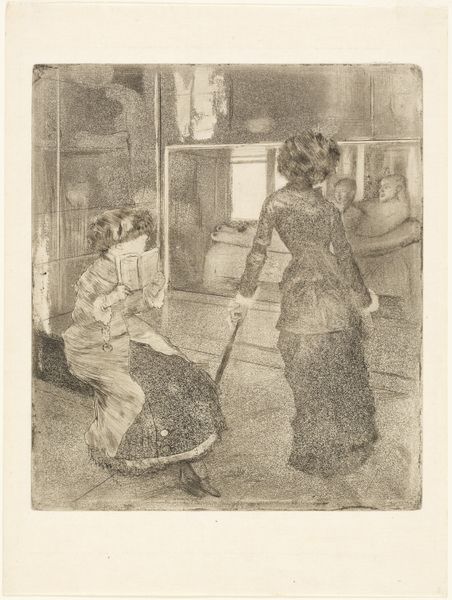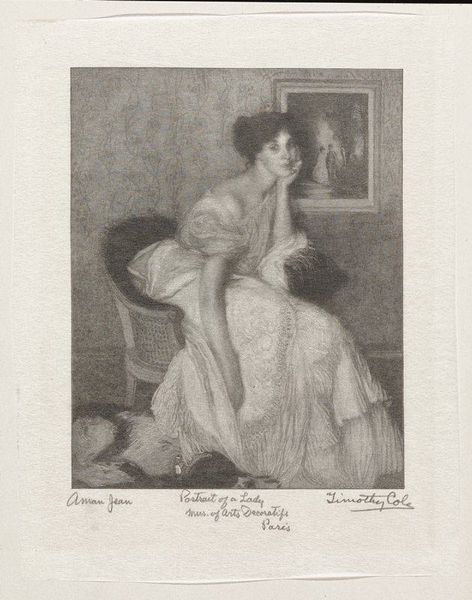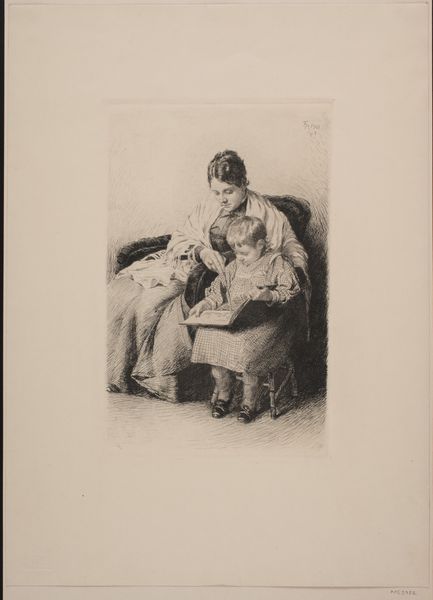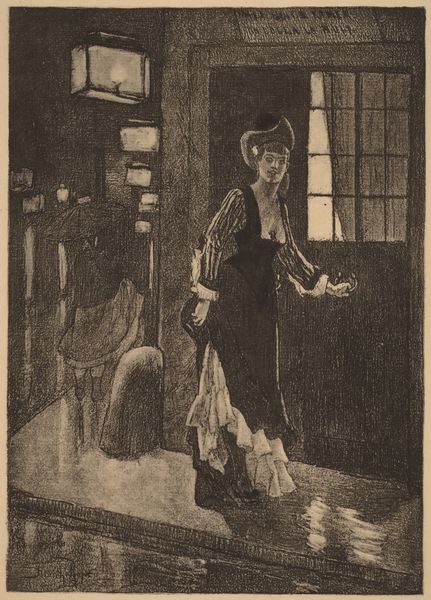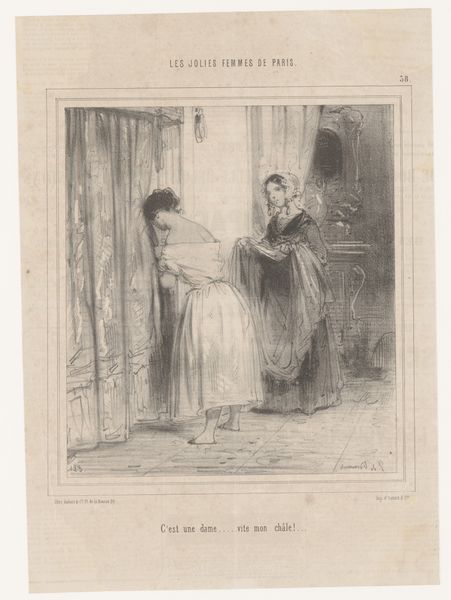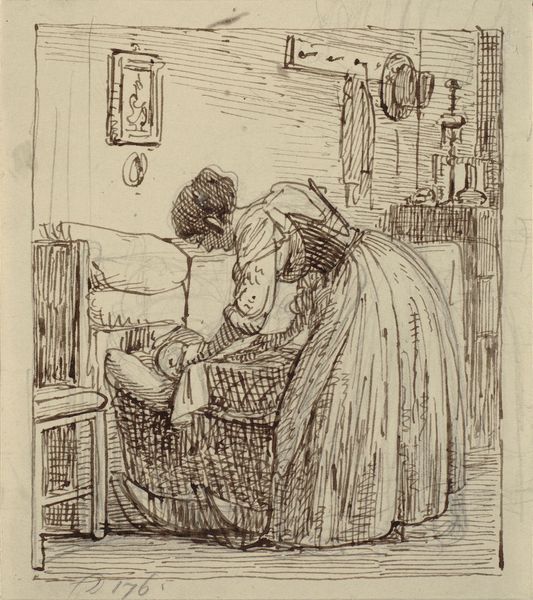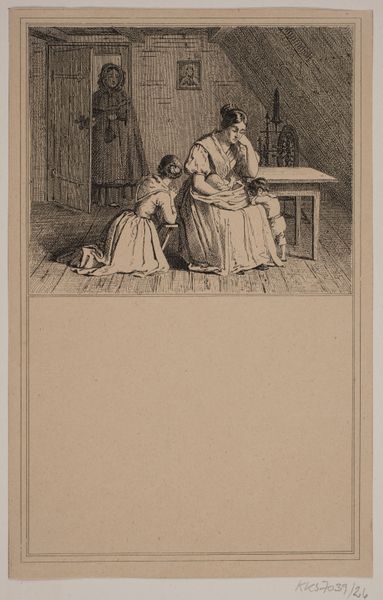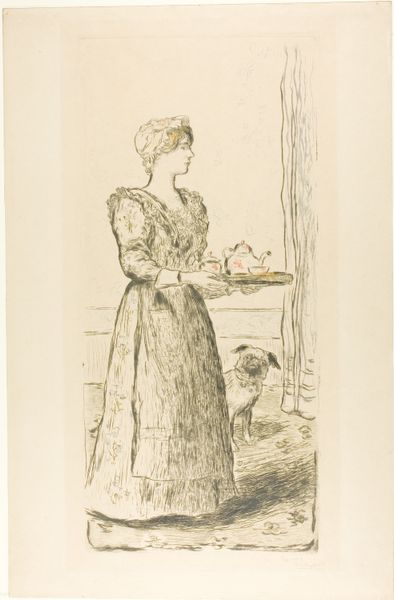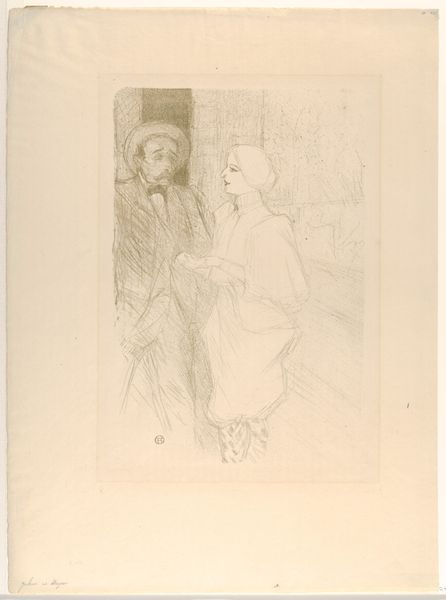
drawing, print, pencil
#
portrait
#
drawing
# print
#
charcoal drawing
#
pencil drawing
#
pencil
#
cityscape
#
genre-painting
#
charcoal
Dimensions: image: 418 x 237 mm (not including remarque) sheet: 542 x 352 mm
Copyright: National Gallery of Art: CC0 1.0
Curator: Here we have Jennie Augusta Brownscombe’s "Untitled (Two Girls at a Window)," likely created sometime in the 1890s. The work appears to be charcoal and pencil, possibly also a print. Editor: There's a wistful feeling to it. It's monochromatic but so richly detailed, capturing the soft light illuminating the figures and the textures of their dresses. I’m drawn to the way the younger girl is lost in her own world at the window. Curator: Brownscombe, active in a period where women artists were gaining increased visibility, frequently depicted scenes of domestic life and historical narratives. I see this as a fine example of genre painting, focusing on everyday life but with a sensitivity towards character and atmosphere. Editor: Precisely, and it feels quite coded, doesn’t it? The window serves as both barrier and portal. The younger woman is looking outward, seemingly towards a distant steeple, smelling a flower, a symbol often loaded with themes of burgeoning sexuality or the limited roles of women. The other woman seems to be resigned. Curator: Yes, I find your reading compelling. There is indeed a sense of constraint; a very common theme across much 19th century art. Editor: Right, and considering Brownscombe’s identity as a female artist, it is hard not to imagine her infusing the artwork with subtle social critique. We can ask, what choices did the artist want the subjects to have? How did those opportunities impact their class standing, familial, social and romantic roles? Curator: What I appreciate about Browncombe’s work in general, is that while many contemporary artists may have opted for bombast or controversy, she pursued the delicate conveyance of ordinary emotions and relationships, allowing the work a great degree of intimate insight and timeless appeal. Editor: Absolutely, that careful and deliberate approach allows us, even now, to interpret her message about womanhood and the nuances of their domestic roles during that period. Looking closer at their faces, one almost wonders about their dreams versus their lived realities, an important thread to trace. Curator: The interplay between social norms and personal aspirations in Brownscombe's artwork makes it quite significant for our times, because it demonstrates the continued need for such discourse and debate through all social means available to us, including art. Editor: And by revisiting artworks like this we also encourage audiences to keep a critical lens to the gender dynamics reflected in art throughout history. Curator: Yes, truly worthwhile and illuminating I would say.
Comments
No comments
Be the first to comment and join the conversation on the ultimate creative platform.
